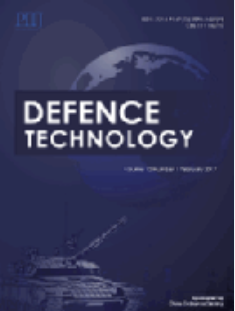Experimental study on the TNT equivalence for blast parameters in a confined space
IF 5
Q1 ENGINEERING, MULTIDISCIPLINARY
引用次数: 0
Abstract
The concept of TNT (Trinitrotoluene, C7H5N3O6) equivalence is often invoked to evaluate the performance and predict the explosion parameters of different types of explosives. However, due to its low prediction accuracy and limited application range, the use of TNT equivalence for predicting explosion parameters in a confined space is rare. Compared with explosions in free fields, the process of explosive energy release in a confined space is closely related to various factors such as oxygen balance, combustible components content, and surrounding oxygen content. Studies have shown that in a confined space, negative oxygen balance explosives react with surrounding oxygen during afterburning, resulting in additional energy release and enhanced blast effects. The mechanism of energy release during afterburning is highly complex, making it challenging to determine the TNT equivalence for blast effects in a confined space. Therefore, this remains an active area of research. In this study, internal blast experiments were conducted using TNT and three other explosives under both air and N2 (Nitrogen) conditions to obtain explosion parameters including blast wave overpressure, quasi-static pressure, and temperature. The influences of oxygen balance and external oxygen content on energy release are analyzed. The author proposes principles for determining TNT equivalence for internal explosions while verifying the accuracy of obtained blast parameters through calculations based on TNT equivalence. These findings can serve as references for predicting blast performance.
密闭空间内TNT爆炸参数等效性的实验研究
TNT (Trinitrotoluene, C7H5N3O6)当量的概念常被用于评价不同类型炸药的性能和预测爆炸参数。但由于TNT当量法预测精度低,应用范围有限,在密闭空间内使用TNT当量法预测爆炸参数的情况较少。与自由场爆炸相比,密闭空间爆炸能量释放过程与氧平衡、可燃组分含量、周围氧含量等多种因素密切相关。研究表明,在密闭空间中,负氧平衡炸药在加力燃烧期间与周围的氧气发生反应,导致额外的能量释放和增强的爆炸效果。加力燃烧过程中的能量释放机制非常复杂,这使得在密闭空间内确定TNT等效爆炸效应具有挑战性。因此,这仍然是一个活跃的研究领域。本研究采用TNT和其他三种炸药在空气和N2(氮气)条件下进行内爆实验,获得爆炸波超压、准静压和温度等爆炸参数。分析了氧平衡和外氧含量对能量释放的影响。作者提出了确定内爆TNT当量的原则,并通过TNT当量计算验证所获得的爆破参数的准确性。这些结果可作为预测爆炸性能的参考。
本文章由计算机程序翻译,如有差异,请以英文原文为准。
求助全文
约1分钟内获得全文
求助全文
来源期刊

Defence Technology(防务技术)
Mechanical Engineering, Control and Systems Engineering, Industrial and Manufacturing Engineering
CiteScore
8.70
自引率
0.00%
发文量
728
审稿时长
25 days
期刊介绍:
Defence Technology, a peer reviewed journal, is published monthly and aims to become the best international academic exchange platform for the research related to defence technology. It publishes original research papers having direct bearing on defence, with a balanced coverage on analytical, experimental, numerical simulation and applied investigations. It covers various disciplines of science, technology and engineering.
 求助内容:
求助内容: 应助结果提醒方式:
应助结果提醒方式:


